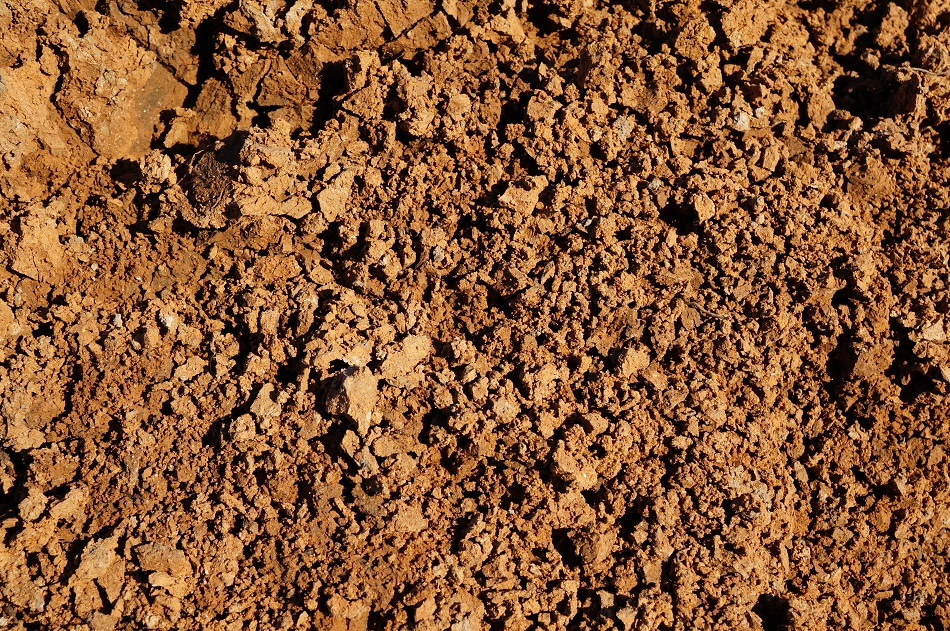
Image Credit: ognennaja/Shutterstock.com
From a geological point of view, clay minerals are used for a wide range of applications including stratigraphic correlations and as indicators of the presence of both deposition and hydrocarbon generation. Alternatively, within the agricultural and construction industries, clay minerals are used to enhance the properties of soil and brick, respectively. With such a wide range of industrial uses, the microscopic analysis of clay minerals is crucial to determining their mineral properties.
Clay Mineral Morphology
The structure of any clay mineral largely determines the behavior and interaction that this material will have with other types of adjacent clay minerals. For example, a double layer of clay minerals will exhibit a repulsive pressure as a result of the physicochemical swelling that arises in this double layer model. Other clay mineral properties that are largely dependent upon their morphological characteristics include adsorption, layer charge, and polytypism.
Aside from the double-layer model, which typically involves the stacking of two sublayers that are separated by silicate material, mixed-layer structures can also exist. Clay minerals that exhibit such structures also referred to as inter-stratified layers, can have layers in a periodic or disordered pattern.
As a result of this altered structure, mixed-layer clay mineral structures exhibit unique geochemical properties, such as water and/or organic molecule adsorption and altered illitization (transformation from one clay minerals to illite) capabilities.
Analyzing Clay Minerals with EM
Electron microscopy (EM) is a highly versatile analytical tool that has allowed researchers to analyze a wide range of materials in almost every imaginable industry on earth. For the elemental analysis of clays and other similar minerals, some of the most widely used EM techniques include scanning electron microscopy (SEM) that has been fitted with an energy dispersive spectrometer (EDS), high-resolution secondary electron imaging, backscattered electron (BSE) imaging, X-ray microanalysis, and X-ray mapping.
SEM
Compared to conventional microscopy techniques, SEM has several advantages, including significantly higher resolution capabilities and greater depth of field magnifications that can reach up to 100,000. Several research studies of clay minerals, specifically those interested in determining porosity levels at a microstructural level, have utilized SEM for these reasons.
One recent study that investigated the porosity and other structural characteristics of Boom Clay utilized a broad ion beam (BIB) SEM technique (BIB-SEM). Remarkably, the BIB-SEM technique allowed researchers to detect over 33,000 pores that were present within their samples, 95% of which measured to be smaller than 500 nanometers (nm).
Furthermore, these characteristic pore morphologies were also detected at each mineral phase within the samples. The ability of BIB-SEM to provide a real-time method of visualizing porosities has allowed the researchers of this study to quantify porosity levels, extrapolate pore-size distributions and make general assumptions of the bulk sample properties.
TEM
Transmission electron microscopy (TEM) is another type of powerful and widely used EM technique. Compared to SEM, which creates an image from the detection of electrons that have reflected off the sample’s surface, TEM instead creates a final image by detecting electrons that have passed through the sample.
As a result of the inherent differences between SEM and TEM, these two EM techniques are used for different reasons when it comes to clay morphological analysis. Whereas SEM allows researchers to observe the specific morphologies of clay mineral particles at both the micro- and nanoscale, TEM applications have gone beyond the simple morphological observation of clay mineral particles to the investigation of both atomic and crystal structures.
Sources and Further Reading
- Aboudi Mana, S. C., Hanafiah, M. M., & Chowdhury, A. J .K. (2017). Environmental characteristics of clay and clay-based minerals. Geology, Ecology and Landscapes 1(3); 155-161. DOI: 10.1080/24749508.2017.1361128.
- “Electron Microscopy” – The James Hutton Institute
- Hemes, S., Desbois, G., Urai, J. L., De Craen, M., & Honty, M. (2013). Homogeneity vs. Heterogeneity of Porosity in Boom Clay. NEA./RWMC/CLAYCLUB.
- Kogure, T. (2013). Chapter 2.9 – Electron Microscopy. Developments in Clay Science 5; 275-317. DOI: 10.1016/B978-0-08-098259-5.00011-1.
Disclaimer: The views expressed here are those of the author expressed in their private capacity and do not necessarily represent the views of AZoM.com Limited T/A AZoNetwork the owner and operator of this website. This disclaimer forms part of the Terms and conditions of use of this website.